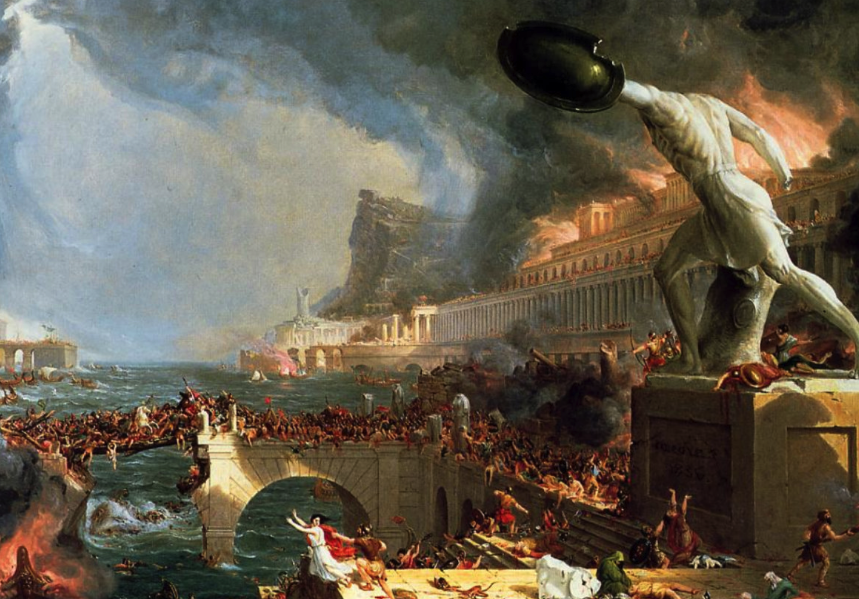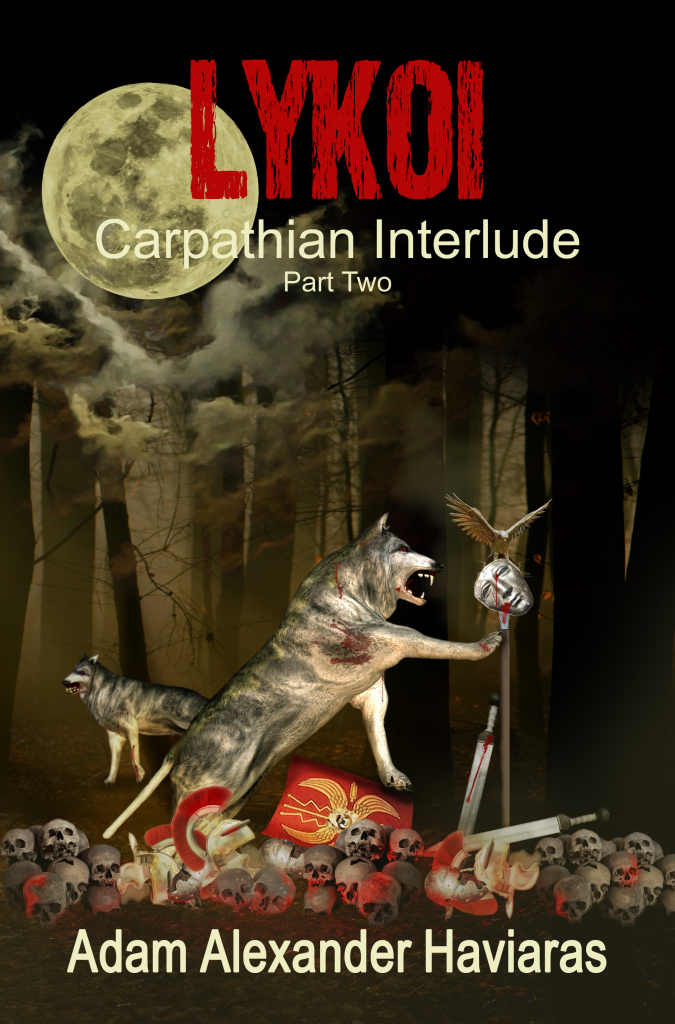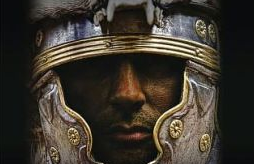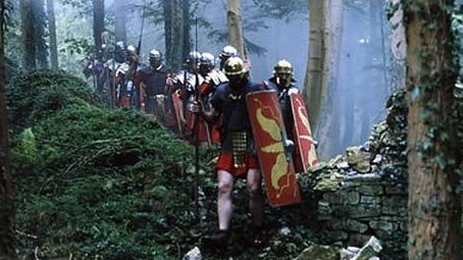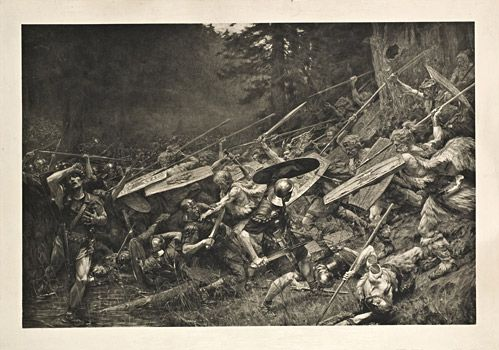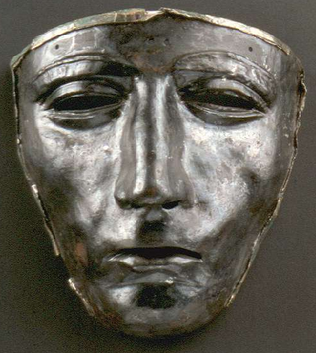Lykoi
LYKOI Unleashed!
Today is Launch Day!
That’s right, LYKOI – Carpathian Interlude Part II is now available from Amazon, Kobo, and iTunes.
For just a few days, Eagles and Dragons Publishing is offering LYKOI for a special launch price of $.99 cents before it goes up.
So, if any of you have friends and family who like ancient history and historical fantasy/horror, please do spread the word!
I’ve really enjoyed writing this book and interlacing the supernatural themes and beliefs of LYKOI with the historical events of the Varus disaster. Also, getting deeper into the minds of the scarred characters has truly been a fascinating and melancholy experience.
I’m currently writing Carpathian Interlude Part III, the working title of which is ‘THANATOS’.
This story is going to get even darker and delve into some very ancient myths around Zoroastrianism and the origins of Mithras. We will also find out who this Carpathian Lord actually is – and you won’t expect it!
Most importantly, I’d like to thank many of you for your support, encouragement and comments, the many personal e-mails, and your help in spreading the word about the series across social media. It all means a great deal, and the series’ success would not be possible without you.
So, thank you once more, and Happy Reading!
The World of LYKOI – Monsters in the Dark – Werewolves in the Ancient World
This post of The World of LYKOI is when history and fantasy morph into the historical horror of the Carpathian Interlude series.
As we know, Emperor Augustus’ three legions, under the command of Publius Quinctilius Varus, were slaughtered in the forests of Germania in an unprecedented defeat for Rome. Fear has a stranglehold on the Roman world, including the emperor, and everyone looks to place blame, to find an explanation.
As Cassius Dio said, it “could have been due to nothing else than the wrath of some divinity.” What else could it have been? The omens were terrible. According to ancient sources, the temple on the Field of Mars in Rome was struck by lightning, locusts invaded the city, and a statue of Victory in the north turned its back on Germania. Surely a bunch of German barbarians under the command of a traitor could not have done this alone? A god must have been involved!
Or something else…
This question is something that the historical fantasy novelist truly relishes. The opportunity to put hindsight and modern doubt aside, and step into the mindset of the ancient world, replete with all of its folk and religious beliefs, its strong superstitions and maybe, just maybe, some ancient knowledge of which we are completely ignorant.
What if Arminius and the Germanic tribesmen received help from someone… something… who also had an interest in halting Rome’s northern advance?
Lykoi is the Greek word for ‘wolves’, and in this story they are not the shy, intelligent, loyal, and enigmatic animals we know them to be today.
Throughout history, the wolf has been demonized and hunted to the point of extinction in most of Europe. Every child in the west has grown up with stories of evil wolves haunting the forests surrounding settlements, slavering beasts who slaughter livestock and people alike and who revel in the blood of their kills.
And what takes the horror of the wolf one step further? – A man who turns into a wolf – a Werewolf.
In doing the research for LYKOI, I discovered that the legend of the Werewolf was not a medieval fabrication as I had previously thought. In the ancient world, there are also references to Lycanthropes, or Werewolves.
In the 5th century B.C. the historian Herodotus wrote about a people known as the Neuri who lived in the Scythian lands:
The Neuri follow Scythian customs; but one generation before the advent of Darius’ army, they happened to be driven from their country by snakes; for their land produced great numbers of these, and still more came down on them out of the desolation on the north, until at last the Neuri were so afflicted that they left their own country… It may be that these people are wizards; for the Scythians, and the Greeks settled in Scythia, say that once a year every one of the Neuri becomes a wolf for a few days and changes back again to his former shape. Those who tell this tale do not convince me; but they tell it nonetheless, and swear to its truth. (Herodotus; Histories Book IV 105)
Herodotus could be a picky historian, so for him to include this reference in his work, while expressing his own doubt at the same time, speaks to the possibility that the belief of the locals where he obtained this story was strong indeed.
But there are stories of wolf men going even farther back. The Roman poet, Ovid, writing during the reign of Emperor Augustus, recounts the tale of the Arkadian King, Lycaon, in his famous work Metamorphoses.
King Lycaon was a Peloponnesian king from c. 1550 B.C. He was an arrogant tyrant who tried to pull a fast-one on Zeus [Jupiter], the king of the gods, by feeding the immortal human flesh. Here is Ovid’s account in the god’s own words:
I traversed Maenalus where fearful dens abound, over Lycaeus, wintry slopes of pine tree groves, across Cyllene steep; and as the twilight warned of night’s approach, I stopped in that Arcadian tyrant’s realms and entered his inhospitable home:—and when I showed his people that a God had come, the lowly prayed and worshiped me, but this Lycaon mocked their pious vows and scoffing said; ‘A fair experiment will prove the truth if this be god or man.’ and he prepared to slay me in the night,—to end my slumbers in the sleep of death. So made he merry with his impious proof; but not content with this he cut the throat of a Molossian hostage sent to him, and partly softened his still quivering limbs in boiling water, partly roasted them on fires that burned beneath. And when this flesh was served to me on tables, I destroyed his dwelling and his worthless Household Gods, with thunder bolts avenging. Terror-struck he took to flight, and on the silent plains is howling in his vain attempts to speak; he raves and rages and his greedy jaws, desiring their accustomed slaughter, turn against the sheep – still eager for their blood. His vesture separates in shaggy hair, his arms are changed to legs; and as a wolf he has the same grey locks, the same hard face, the same bright eyes, the same ferocious look. (Ovid; Metamorphoses, Book I, 216)
In mythology it was not unusual to find the gods punishing humans by turning them into animals, but the example of Lycaon is noteworthy. His sacrilege to Zeus, his hubris, is unforgiveable. The king of the gods could have turned the wicked mortal into anything, any animal or insect, but Zeus chose to turn Lycaon into a wolf man, a being in pain who could not be satiated, who kept his awareness despite not being able to speak. Lycaon is turned into a beast who preys upon beasts, ‘terror-struck’ and yet also terrifying.
There was, it seemed, always a price to pay for being turned into a Werewolf, or ‘Lykos’. It was a painful, horrifying existence.
Another example from ancient literature that stands out is Gaius Petronius’ Satyricon, believed to originate from sometime during the reign of Nero in the 1st century A.D. Petronius’ work is one of the few surviving Roman novels, and it is mostly a satire of life in ancient Rome.
However, one of the episodes involves a character who heads-out one night to his woman’s home with a soldier friend who, as they walk along the road, turns into a Werewolf. Far from being a humorous episode, Petronius writes in detail about what happens:
I seized my opportunity, and persuaded a guest in our house to come with me as far as the fifth milestone. He was a soldier, and as brave as Hell. So we trotted off about cockcrow; the moon shone like high noon. We got among the tombstones: my man went aside to look at the epitaphs, I sat down with my heart full of song and began to count the graves. Then when I looked round at my friend, he stripped himself and put all his clothes by the roadside. My heart was in my mouth, but I stood like a dead man. He made a ring of water round his clothes and suddenly turned into a wolf. Please do not think I am joking; I would not lie about this for any fortune in the world. But as I was saying, after he had turned into a wolf, he began to howl, and ran off into the woods. At first I hardly knew where I was, then I went up to take his clothes; but they had all turned into stone. No one could be nearer dead with terror than I was. But I drew my sword and went slaying shadows all the way till I came to my love’s house. I went in like a corpse, and nearly gave up the ghost, the sweat ran down my legs, my eyes were dull, I could hardly be revived. My dear Melissa was surprised at my being out so late, and said, ‘If you had come earlier you might at least have helped us; a wolf got into the house and worried all our sheep, and let their blood like a butcher. But he did not make fools of us, even though he got off; for our slave made a hole in his neck with a spear.’ When I heard this, I could not keep my eyes shut any longer, but at break of day I rushed back to my master Gaius’s house like a defrauded publican, and when I came to the place where the clothes were turned into stone, I found nothing but a pool of blood. But when I reached home, my soldier was lying in bed like an ox, with a doctor looking after his neck. I realized that he was a werewolf, and I never could sit down to a meal with him afterwards, not if you had killed me first. Other people may think what they like about this; but may all your guardian angels punish me if I am lying. (Petronius; Satyricon 62)
Petronius’ character was either drinking some heady wine that night, or else his soldier friend had other major issues.
The point of these texts is that there was an awareness of Werewolves in the ancient world, or of Lycanthropy, a psychological disease that the famous physician Galen apparently wrote about, in which a person believed they were part wolf and had the ravenous appetite to match that belief.
Now back to the LYKOI and the Carpathian Interlude.
The Varus disaster was an unbelievable event, behind which much darker powers are at play. Throughout this series, the powers of Light (Mithras and Rome) and Dark (The Carpathian Lord and the ‘Barbarians’) are locked a battle that has been raging for ages.
And Gaius Justus Vitalis, his men, and the boy, Daxos, are caught up in the middle of it. The war rages on many fronts – in the dark of the forests of Germania and Carpathia, on the battlefields of the frontier, and mostly in the hearts and minds of Mithras’ own soldiers, his Heliodromus and his Miles, Gaius and his men.
This is a story that will haunt you and leave the screams of Rome’s dead and dying men ringing in your ears for a long time to come, just as it did for the people of Rome over two thousand years ago.
Thank you for reading!
LYKOI – Carpatian Interlude Part II is now available for pre-order, so be sure to grab your copy today!
It is available from Amazon, Kobo, and iTunes/iBooks.
If you are looking for a haunting Halloween read that takes place in the ancient world, this is the book for you!
Also, if you have not read IMMORTUI – Carpathian Interlude Part I, it is available for Free from Kobo and iTunes/iBooks for the next couple days, and for $.88 cents from Amazon. Don’t miss out, and do please spread the word!
If you are curious about IMMORTUI or LYKOI, you can read some lengthy excerpts HERE.
The World of LYKOI – The Varus Disaster
Have you ever wondered why forests are so often the setting for nightmares?
Think about it. It’s true.
I remember a recurring nightmare that I had when I was a child: I’m in a dark forest, walking by myself. My feet crunch on a carpet of dead leaves in a slow, steady rhythm. Then a second set of footsteps, comes into my hearing, only they’re faster. They’re pursuing me. I begin to panic, and run. I yell but the woods devour my cries. I believe someone is chasing me, and my heart is close to bursting… And then I wake up.
That might not seem scary now, but when you are 6 it’s another story.
Nightmares are fascinating and curious. As a child I didn’t know that the quickening steps of my forest pursuer were really the sound of the blood pulsing in my ear as it pressed into my pillow. Those woods were terrifying to me.
Think about the woods again. How many of you have read or heard scary stories that take place in a forest? For ages, the woods or any kind of forest, have been shadow realms of the unknown, places of magic and nightmare, of beasts and death.
But there is a reason why forests have become such monsters in and of themselves. Not all tales of horror in the woods are fabricated by active, childish minds.
As I mentioned last week, the Carpathian Interlude series revolves around a particular event in Roman history known as the Varus Disaster. It took place in A.D. 9, during the reign of Emperor Augustus, and it was truly the stuff of nightmares.
Public Quinctilius Varus was a patrician Roman general and member of the imperial circle who had been put in charge of the administration of Germania, which had only recently been tentatively subdued by Rome. Varus had previously had success governing provinces in Africa, Syria, and Judea, so it was believed he would be more than capable of handling Germania.
Varus is said to have also had a reputation for being a tyrant who inflicted brutal punishment on the people he was governing and squeezing taxes out of.
It’s safe to say that Varus thought he was quite secure in his position. He was a skilled administrator by Roman standards, had a proven track record, the bloodline to back it up, and a staff of trusted advisors.
Among the people on Varus’ staff was a man named Arminius. Does that name ring a bell?
Arminius was the son of Segimerus, the chieftain of the Cherusci, a Germanic tribe that had bent the knee to Rome. As surety for their father’s good behaviour, Arminius and his younger brother Flavus were sent to Rome when they were just boys. We’ll focus on Arminius.
Arminius grew up in Rome, learned the ways of Roman life, and politics, and martial prowess. He began to make a name for himself and was admitted to the Equestrian order to become a cavalry officer.
When Varus was assigned to Germania, Arminius went with him as one of his most trusted advisors and skilled officers. In fact, it’s said that Varus and Arminius regularly dined together; no doubt Varus valued Arminius’ advice in governing the lands of his former people.
This is the seed of the nightmare of which I spoke earlier.
In the late summer of A.D. 9, Publius Quinctilius Varus led three legions (the XVII, XVIII, and XIX Legions) deep into Germania to collect taxes and tribute. Varus also had with him six auxiliary cohorts, three cavalry alae, slaves, and camp followers consisting of women, children, merchants and tradesmen. This was a large, slow-moving army. Because they were in a dense forest, the line of march was thin, and stretched over 15-20 kilometres.
But Varus felt he had little to worry about and was so confident that he didn’t event send scouts ahead.
Then Arminius brought word of an uprising to Varus who sent the former to take care of it. Varus was warned against Arminius by another German advisor, Segestes, who was actually a relative of Arminius. But Varus ignored Segestes’ warnings not to trust Arminius and so the nightmare really began.
Rather than supressing the uprising, Arminius instead disappeared into the forest to rally the allied Germanic tribes and attack the Roman forces.
The mountains had an uneven surface broken by ravines, and the trees grew close together and very high. Hence the Romans, even before the enemy assailed them, were having a hard time of it felling trees, building roads, and bridging places that required it. They had with them many wagons and many beasts of burden as in time of peace; moreover, not a few women and children and a large retinue of servants were following them… For the Romans were not proceeding in any regular order, but were mixed-in helter-skelter with the wagons and the unarmed, and so, being unable to form readily anywhere in a body, and being fewer at every point than their assailants, they suffered greatly and could offer no resistance at all. (Cassius Dio, The Roman History 20)
I thought my nightmare in the forest was horrifying.
For three days the Romans were ambushed by the Germanic tribesmen. Three days in the tangle of the Teutoburg Forest, the bogs and brambles, the rivers, and marshes, violent storms and… the dark.
Varus, the legions, and the camp followers had no chance. Arminius had learned how Romans fought, how to weaken them, and how to defeat them. He had laid his plans well, and after three days of desperate fighting, the Romans made their last stand at a place known today as Kalkriese.
In the end, Varus and some of the other officers took their own lives rather than fall into the enemy’s hands. Perhaps, as well as fear, it was Varus’ shame that let him to do such a thing. The total number of Roman dead? – about 20,000.
… three legions were cut to pieces with their general, his lieutenants, and all the auxiliaries… they say that he [Augustus] was so greatly affected that for several months in succession he cut neither his beard nor his hair, and sometimes he would dash his head against a door, crying: “Quinctilius Varus, give me back my legions!” And he observed the day of the disaster each year as one of sorrow and mourning… (Suetonius; Life of Augustus 23)
There is no mistaking that this was indeed a real-life nightmare for Rome, and this crushing defeat struck fear into the hearts of everyone from the lowest Suburan sewer rat right the way up to Augustus himself.
Years later, when Germanicus went into Germania to find the remains of the fallen legions, he came to the site of the struggle.
…they [Germanicus and his men] visited the mournful scenes, with their horrible sights and associations. Varus’s first camp with its wide circumference and the measurements of its central space clearly indicated the handiwork of three legions. Further on, the partially fallen rampart and the shallow fosse suggested the inference that it was a shattered remnant of the army which had there taken up a position. In the centre of the field were the whitening bones of men, as they had fled, or stood their ground, strewn everywhere or piled in heaps. Near, lay fragments of weapons and limbs of horses, and also human heads, prominently nailed to trunks of trees. In the adjacent groves were the barbarous altars, on which they had immolated tribunes and first-rank centurions. Some survivors of the disaster who had escaped from the battle or from captivity, described how this was the spot where the officers fell, how yonder the eagles were captured, where Varus was pierced by his first wound, where too by the stroke of his own ill-starred hand he found for himself death. They pointed out too the raised ground from which Arminius had harangued his army, the number of gibbets for the captives, the pits for the living, and how in his exultation he insulted the standards and eagles. (Tacitus, Annals 1.61)
People must have thought that the gods had turned their backs on Rome.
So how does this fit with the Carpathian Interlude?
When I think of the nightmare of the Varus disaster, what it must have felt like for the troops and camp followers who knew that the barbarians would kill them at any moment, I feel terror for them. The shock, the surprise, the desperation as people were dying all around them in such horrible ways must have been truly overwhelming.
I wanted to take the terror one step further. What if Arminius had more than just the element of surprise on his side? What if he had allied himself with a darker, more powerful enemy in his desperation to crush Rome and assume hegemony over the Germanic tribes?
This is the path I’ve taken in turning this historic event into historical horror.
Cassius Dio describes the omens that Rome witnessed in the aftermath of the disaster, the fearful belief of Augustus and others that the gods were indeed angry:
For a catastrophe so great and sudden as this, it seemed to him [Augustus], could have been due to nothing else than the wrath of some divinity; moreover, by reason of the portents which occurred both before the defeat and afterwards, he was strongly inclined to suspect some superhuman agency. (Cassius Dio, The Roman History 24)
In LYKOI – Carpathian Interlude Part II, it’s not a god that has laid the Romans low in the wooded shadows of Germania. The enemy that has defeated Rome is the one that Gaius has dreaded ever since his battle with the Immortui in Part I.
Here is the description for LYKOI – Carpathian Interlude Part II:
In the year A.D. 9, three legions of the Emperor Augustus are massacred in the forests of Germania. It is a defeat that fills the heart of the Roman Empire with terror.
Meanwhile, in Rome, Gaius Justus Vitalis and his surviving men are struggling with the trauma of their battle with the Immortui in the Carpathian Mountains, an experience that has changed them forever.
When shades of the dead whisper to Gaius that something more sinister and terrible is responsible for Rome’s recent defeat in Germania, he knows that his days of peace are numbered.
Aware of Gaius and his men’s unique experiences, the Emperor orders them across the Danube frontier to discover what has happened to the lost legions, and to bring the perpetrators to justice. The stakes are high, and Gaius knows that if he does not succeed, he and his family are doomed.
With a handful of warriors, and a boy who may hold the key to his enemy’s defeat, Gaius crosses the frontier to hunt down the truth behind the horrors he suspects.
Only when fear is at its most intense, can true heroism come to the light.
LYKOI’s release date is October 25th, 2014, but it is available for pre-order from Amazon, Kobo, and iTunes/iBooks if your interest is piqued. It will be released at a special launch price for a short period time.
Also, beginning on October 12th, IMMORTUI (Carpathian Interlude Part I) will be available for $.99 cents on Amazon and for Free on Kobo and iTunes for a short time. If you haven’t read it, you’ll want to take advantage of this special offer.
I hope you’ve enjoyed this sneak peek at the world of LYKOI. I’ll be back next week with a look at what Gaius and his men will face in the dark forests of Germania.
Thank you for reading!
If you are interested in more of the history of the Varus disaster, as well as the finds from Kalkriese, the video below is an excellent documentary for getting stuck into the nightmare:
http://youtu.be/jDKLQAraxe8?list=PLaGnq8H7GaVLH-dDaUlKHpy-JcMqwmI5F



